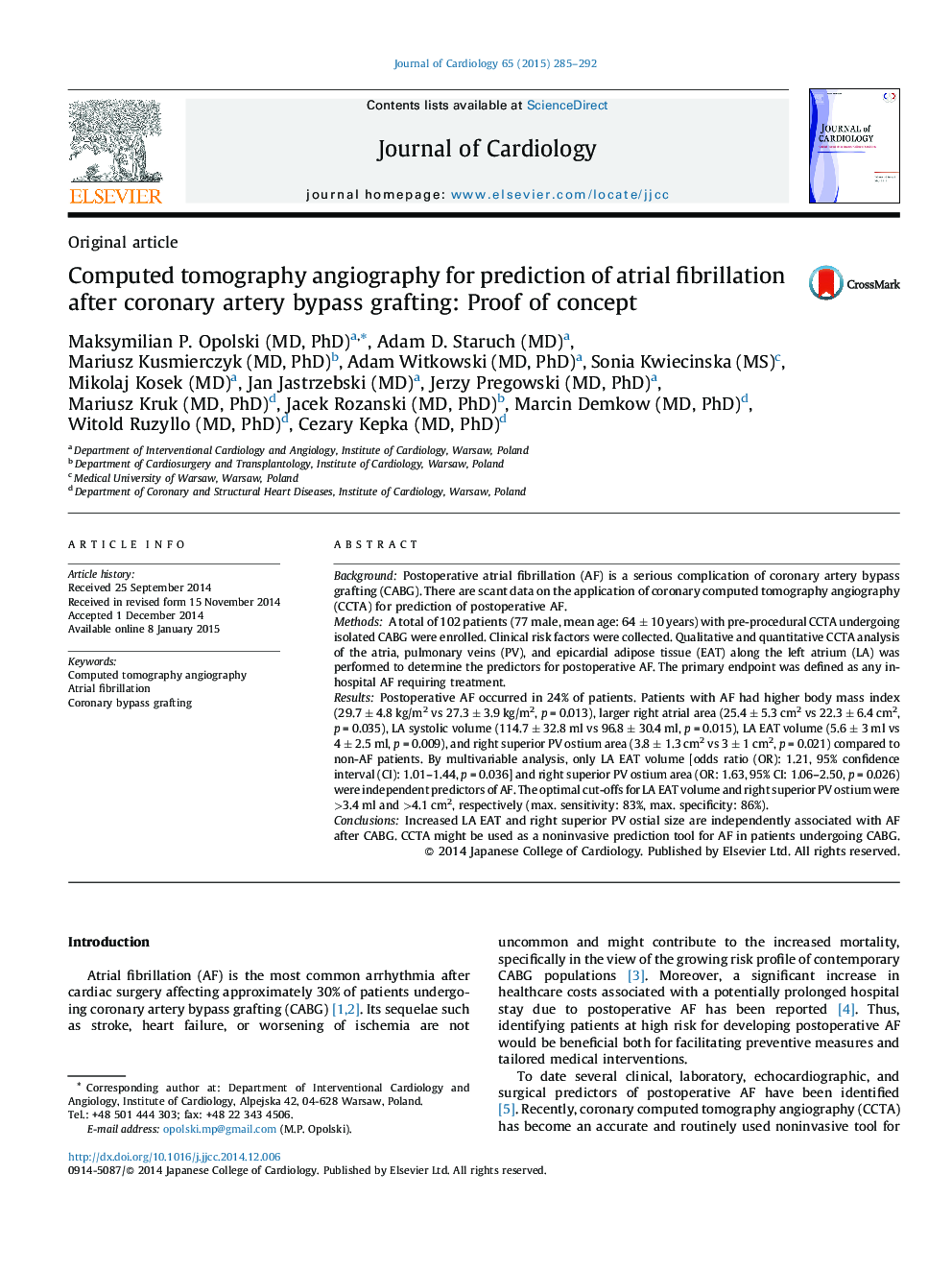| Article ID | Journal | Published Year | Pages | File Type |
|---|---|---|---|---|
| 2963064 | Journal of Cardiology | 2015 | 8 Pages |
BackgroundPostoperative atrial fibrillation (AF) is a serious complication of coronary artery bypass grafting (CABG). There are scant data on the application of coronary computed tomography angiography (CCTA) for prediction of postoperative AF.MethodsA total of 102 patients (77 male, mean age: 64 ± 10 years) with pre-procedural CCTA undergoing isolated CABG were enrolled. Clinical risk factors were collected. Qualitative and quantitative CCTA analysis of the atria, pulmonary veins (PV), and epicardial adipose tissue (EAT) along the left atrium (LA) was performed to determine the predictors for postoperative AF. The primary endpoint was defined as any in-hospital AF requiring treatment.ResultsPostoperative AF occurred in 24% of patients. Patients with AF had higher body mass index (29.7 ± 4.8 kg/m2 vs 27.3 ± 3.9 kg/m2, p = 0.013), larger right atrial area (25.4 ± 5.3 cm2 vs 22.3 ± 6.4 cm2, p = 0.035), LA systolic volume (114.7 ± 32.8 ml vs 96.8 ± 30.4 ml, p = 0.015), LA EAT volume (5.6 ± 3 ml vs 4 ± 2.5 ml, p = 0.009), and right superior PV ostium area (3.8 ± 1.3 cm2 vs 3 ± 1 cm2, p = 0.021) compared to non-AF patients. By multivariable analysis, only LA EAT volume [odds ratio (OR): 1.21, 95% confidence interval (CI): 1.01–1.44, p = 0.036] and right superior PV ostium area (OR: 1.63, 95% CI: 1.06–2.50, p = 0.026) were independent predictors of AF. The optimal cut-offs for LA EAT volume and right superior PV ostium were >3.4 ml and >4.1 cm2, respectively (max. sensitivity: 83%, max. specificity: 86%).ConclusionsIncreased LA EAT and right superior PV ostial size are independently associated with AF after CABG. CCTA might be used as a noninvasive prediction tool for AF in patients undergoing CABG.
